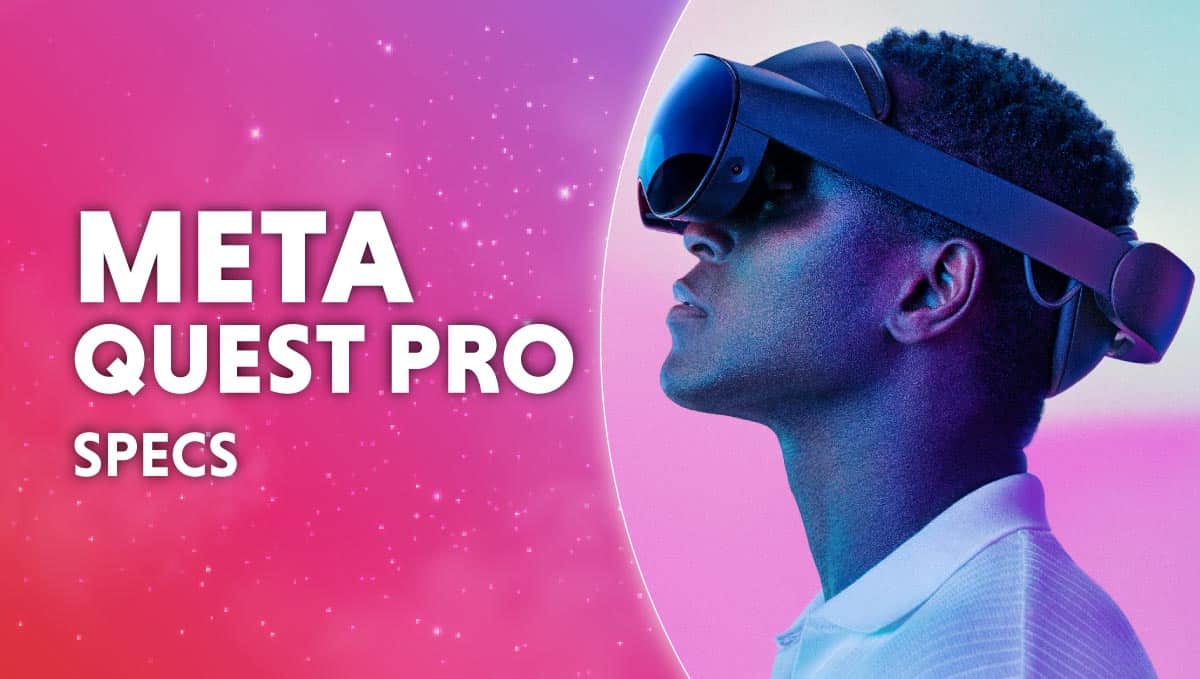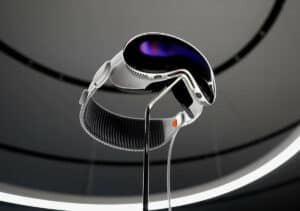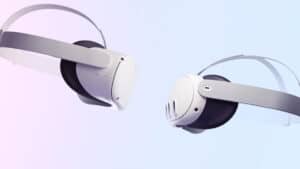Meta Quest Pro specs
A deep dive into the Meta Quest Pro specs

WePC is reader-supported. When you buy through links on our site, we may earn an affiliate commission. Prices subject to change. Learn more
When ark Zuckerberg and Boz officially announced the Meta Quest Pro release date at the Meta Connect 2022 event, there was an irritating lack of specificity around the Meta Quest Pro specs and overall capabilities.
We got a lot of well-meaning videos displaying various use cases, but we were given relatively little when it comes to nitty-gritty tech stuff.
This was a particular shame as we think most people will want to know the technical capabilities of the Meta Quest Pro, as this sort of information is far more helpful in establishing what a device can actually do.
So, let’s take a look at everything we know so far about the Meta Quest Pro specs, and see which ones are the most important to the device itself.
Meta Quest Pro specs: A quick look
Here’s a quick list of the specs, which are gathered directly from Meta itself, and some hands-on sources, all of which will be linked.
- CPU: Qualcomm Snapdragon XR2+
- RAM: 12GB RAM
- Storage: 256GB
- Optics: Pancake lenses with an IPD range of 55-75mm, with continuous automatic adjustment
- Resolution: 1800×1920 (per-eye)
- Refresh rate: 90hz
- Battery life: 1-2 hours rated
- Weight: 722g/1.59lbs
Meta Quest Pro CPU
The Meta Quest Pro CPU Is the Qualcomm Snapdragon XR2+, which is a direct follow-up to the Snapdragon XR2. Truly a Shyamalan-style twist there.
Anyway, the ‘Snapdragon’ designation has been used by Qualcomm for years to refer to their mobile chipsets, indeed you might recognize the name from recent phone spec sheets.
While details around the + variant are fairly slim, we can make some educated guesses as to its features by looking at the previous variant.
The previous variant could handle up to 7 concurrent camera inputs and can support HDR and up to 3K x 3K-per eye
This all sounds fantastic, but you have to keep in mind that it’s just the chipset and there’s always some give and take when it comes to how the reference chip can be utilized for different use cases.
Meta Quest Pro RAM
RAM, or Random Access Memory buffers stuff for the CPU, in this case, the Snapdragon XR2+. This allows the CPU quicker access to it, instead of having to fetch it directly from the storage.
In short, this makes for two key improvements. it allows the Meta Quest Pro to be snappier and smoother to use. Additionally, it means that it can multitask more effectively, which can make switching between games or apps far quicker too.
Meta Quest Pro storage
At present, the Meta Quest Pro is only available with 256GB of storage, which seems a bit low to be honest, especially with the rapidly growing size of games these days.
However, the Meta Quest Pro store page says ‘starting at $1500’. This makes us think that larger storage options will become available at some point, but at this point, that is pure speculation.
Meta Quest Pro optics
The Meta Quest Pro optics are also getting an upgrade, with some so-called ‘pancake lenses’. Unfortunately, the amusing name doesn’t scale with the novelty of the technology, however, it’s still very interesting.
Essentially, pancake lenses are a novel technology that’s too smart for us to fully understand, but they “fold” light over and over again via more than one actual piece of glass, which allows the lenses themselves to be placed closer to the displays themselves.
This results in a far more slimline overall profile. Do you remember the original Oculus Rift and how far it hung off of your face? We do too, and pancake lenses allow the bulk of the headset to be closer to your head.
This means that you get a slimmer overall profile and chances are that the image will be clearer, though this remains to be seen. (lmao gotten).
Additionally, the Meta Quest Pro FOV is around 100-110, (Measured horizontally). This is a solid upgrade over the Quest 2’s 95-degree FOV.
Meta Quest Pro resolution
Talking about a VR headset’s resolution has always been tricky as there are two individual screens, and you see them through lenses, so it all gets a bit muddled, meaning that it’s tricky to gauge.
However, we can compare Meta Quest 2 to the Meta Quest Pro, which should give us an idea of how it’ll feel to actually use it, and weirdly enough, the news here is strangely underwhelming.
This is because the Meta Quest Pro has an identical resolution to the Meta Quest 2, which seems like a missed opportunity. However, it might be due to the increased focus on exercise and professional use cases.
Meta Quest Pro refresh rate
Again, the Meta Quest Pro has failed to make an improvement over the Meta Quest 2, with the same 90hz refresh rate. We speculate this is an upgrade that will appear on the eventual Meta Quest 3.
Much like the resolution, we think that Meta has held back on offering this on the Meta Quest Pro, due to its non-gaming focus. Obviously, we won’t know much about this for sure until we hear more about the Meta Quest 3 itself.
Meta Quest Pro weight
The weight has seen a substantial increase over the Meta Quest 2 at 722g/1.59lbs over the previous headset’s 503/1.1lbs. This might actually cause some issues as it seems like the fitness features of the Meta Quest Pro are one of the primary focuses. Meaning that an increased weight might be less-than-ideal.
Meta Quest Pro battery life
Here we see a maximum of 1-2 hours. which sounds low, but given the non-gaming focus, a 2 hours maximum might actually be ok, especially where exercise and work-related uses are concerned.
What is the IPD of the Meta Quest Pro?
The Meta Quest Pro has an IPD range of 55-75mm.
This will be continually adjusted to lessen the likelihood of eyestrain.
Is the Meta Quest Pro for gaming?
While the Meta Quest Pro can certainly be used for VR gaming like the Meta Quest 2, however, gaming is not it’s primary focus.











